Erica Synths Black Code Source Handleiding
Erica Synths
Niet gecategoriseerd
Black Code Source
Bekijk gratis de handleiding van Erica Synths Black Code Source (4 pagina’s), behorend tot de categorie Niet gecategoriseerd. Deze gids werd als nuttig beoordeeld door 62 mensen en kreeg gemiddeld 5.0 sterren uit 31.5 reviews. Heb je een vraag over Erica Synths Black Code Source of wil je andere gebruikers van dit product iets vragen? Stel een vraag
Pagina 1/4

THANK YOU FOR CHOOSING ERICA
SYNTHS BLACK SERIES MODULE!
Erica Black Series include high-end,
unique functionality and superior quality
modules. Only the best, highest quality
components are used, all inputs and
outputs are protected against undesired
overvoltage. When designing Black
Series, we put design and usability
superior. Big knobs are assigned to key
functions of the module, which makes
Black Series ideal for live performances.
Enjoy!
Erica Synths Black Code Source is
unique design true stereo digital noise
or dual random CV generator, using a
complicated calculation of polynomials of
various configurations. The module will fit
ideally in percussion synthesis or random,
self generation patches. The Code Source
also can be used as an extreme eects
unit to bitcrush and destroy sounds in
radical ways.
Basically, you can consider it as a
sample&hold noise generator, that is
able to “rewind” or repeat incredibly long
sequences of seemingly random levels.
X, Y and S controls together provide over
4000 dierent dual CV sequences for
every MODE switch position, that can be
triggered via the S TRIG.
FEATURES:
Dual random CV generator
Up to 9 noise flavours with
adjustable pitch
All parameters are CV controllable
Expandable features with an
Expander module
This is sample rate knob.
When sample rate clock is set to a
high value (or there is some VCO
plugged into CLOCK IN) , L&R
outputs provide stereo digital noise.
Noise is independent for the left
and right channels. When sample
rate is set to a low frequency (or
there is some LFO or sequencer
clock plugged into CLOCK IN), L&R
outputs provide two control voltages
that can be used as a pitch, filter,
eect or any other control
for external modules.
Set one of 16 polynomial feedback
configuration aspects X.
X and Y basically represent 16x16
square field, and you can move
around using the X and Y pots or CVs.
Every setting will behave dierently,
produce dierent sequence of codes
(output values), and have dierent
length of the sequence before it loops.
S TRIG input accepts all kind of
signals from single pulses to normal
full band audio, and (re)sets the
polynomial on the rising edge of
the triggering pulse or sound. When
module is used as a CV source with
sequencer ticks in the clock input,
this S TRIG input can be used to reset
the generated code sequence on,
for example, every single, second or
fourth. measure, or at the beginning
of the track.
These are Left and Right outputs. You can have
random CVs here, if Rate is set to low sample
rate, or digital noise,
if it’s set to higher sample rate.
Output level can be configured via jumper on
the back of the module. You can select bipolar
-5V - +5V output or unipolar 0 - +10V, especially
useful for random sequencing
of VCOs.
S TRIG button will restart the
polynomial from the SET point.
While holding this button,
S TRIG input will be ignored.
Set one of 16 polynomial
feedback configuration aspects Y.
MODE switch will alter the
character of the sound, and allows
to achieve perfect recreation of
most kinds of classic computer
music chip noise. In LFO range it
sets how many CV levels
L and R outputs will provide. Refer
to the table below for
MODE settings!
This is Clock Input. The external clock
replaces internal one, and you can
sync the module with master clock
of the system or change pitch of the
noise in tune with your VCOs. Patch
LFO output or master clock form the
sequencer for random CVs on the
outputs or VCO or even vocals
for pitched noise.
These are CV Inputs
for altering Rate, X, Y and
S settings correspondingly.
Set the starting point of selected
sequence. This will be particularly
audible in low Rate settings, when
CVs are generated on the outputs.
These are X, Y and S CV
attenuators.
TECHNICAL SPECIFICATIONS:
Output level -5…+5V (or 0…+10V) ....................
CV level -10V - +10V ...........................................
Power consumption +143mA, -64mA ............
Module width ...........................................10HP
Module depth 35mm ........................................
CODE SOURCE

Erica Synths Black Code Source
Expander takes the Code Source to next
level by adding autobend feature and
more noise/CV modes.
Autobend provides a useful attack
envelope for the internal clock
generator’s pitch and some outside CV
control. This feature helps to quickly
achieve authentic chip-tune percussion
and oldschool electronic game sounds.
NB! Use the ribbon cable supplied with
the module to connect the Expander
to the Code Source! To connect the
Expander you will need to remove the
security jumper from the socket on the
Code Source module. Pay close attention
to the connector socket marking and do
not mix it up with the PSU connector!
The Code Source Expander will work only
with the Code Source module and is not
intended to work as standalone module.
Connecting PSU to the Expander will
permanently damage it.
FEATURES:
Autobend (attack) time control
Autobend depth attenuverter
Alternative mode switch
Autobend envelope output
Clock output
TECHNICAL SPECIFICATIONS:
Power consumption…..…….....+16mA, -11mA
Module width….....………………………………6HP
Module depth…..…………..………..………25mm
This is the send level from the
autobend envelope to clock
generator’s pitch. When set to
center, autobend does not a ect
the sample rate. CW settings send
positive envelope and increase clock
rate (pitch of the noise), while CCW
settings send negative envelope and
reduce clock rate.
ALTERNATIVE MODE switch
provides two additional modes for
every main MODE. Refer to the
table below!
Autobend Trigger IN - when nothing
is connected to this jack, autobend
envelope triggers from the main
module’s S TRIG and button. This
input accepts both trigger pulses
and conventional audio, and triggers
on the rising edge.
Adjust the envelope rate,
from very slow to rapid
AutoBend Manual Trig - This button
allows the envelope to be triggered
manually, as well as block incoming
trigger pulses while the button is
held.
This is Autobend envelope output —
use it for simultaneous control of
VCFs or any other modules.
CLOCK OUT jack outputs internal
generator’s clock for use on some
external modules that may need to
be synchronised. You can connect a
second codesource module’s
CLOCK IN there to make both
modules synchronised. This output
provides the internal generator’s
clock even when something else is
used as the main module’s clock
(other clock source connected to its
clock in), and therefore can be used
as an additional clock for something
else. However, since this output
always outputs internal clock, to
synchronise more than two modules,
you need to split the CLOCK OUT of
the master module using a splitter,
and then pass to all other module
clock inputs.
CODE SOURCE

ZX - in this mode, module outputs an encoded data in the very exact way a ZX Spectrum home computer tape loading did, only it’s now in stereo!
It has a very specific sound that cannot be mistaken with anything else. Just set the right samplerate (2 o’clock). For extra icing on the cake, adjust
polynomial configuration to make it sound like loading real data (image, character color, sprites...). Some ZX Spetrum games featured a “fast
loader” that actually was just a form of protection, and had a slightly dierent sound. For a typical fast loader sound, set the rate to slightly below
3 o’clock and viola - it perfectly matches it! Sound of this coding is more melodic than the “normal” 2 level mode.
BMC - Biphase Mark Code is an old, yet still very popular encoding, used to this day in many kinds of simple-yet-robust communication channels
and data storage - like, for example, magnetic cards. Sound of this coding is significantly lighter in low frequencies, having the most emphasis
on higher frequencies.
SOFT - in this mode, while there are still 64 output levels, codes are generated in a dierent way, producing a softer sound with more bass.
When used as a pitch CV source, it will produce a lot of discrete glissandos, since now subsequent output codes are placed much closer together
and have smaller jumps for the most of the time.
MODE switch position
WITHOUT EXPANDER WITH EXPANDER
L/R output coding MODE ALT switch
up
64 levelsup
up
up
middle
middle8 levelsmiddle
middle2 levels
down
down
down
down
L/R output coding
64 levels SOFT
16 levels
2 levels ZX
64 levels
8 levels
2 levels
32 levels
4 levels
2 levels BMC
MODE SWITCH FUNCTIONS
CODE SOURCE
Product specificaties
| Merk: | Erica Synths |
| Categorie: | Niet gecategoriseerd |
| Model: | Black Code Source |
Heb je hulp nodig?
Als je hulp nodig hebt met Erica Synths Black Code Source stel dan hieronder een vraag en andere gebruikers zullen je antwoorden
Handleiding Niet gecategoriseerd Erica Synths
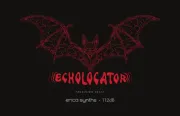
1 September 2025

4 Augustus 2025

4 Augustus 2025

3 Augustus 2023

9 Juli 2023

7 Juli 2023

1 Juli 2023

1 Juli 2023

30 Juni 2023

26 Juni 2023
Handleiding Niet gecategoriseerd
- Xaphoon
- Pentatech
- Krause
- Kanto
- Anova
- Memphis Audio
- Vixen
- Audix
- Cowon
- Fanatec
- Ultimate Support
- Wavtech
- Speaka
- iBOLT
- Rossi
Nieuwste handleidingen voor Niet gecategoriseerd
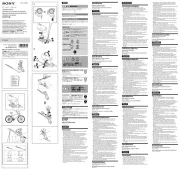
16 September 2025

16 September 2025

16 September 2025
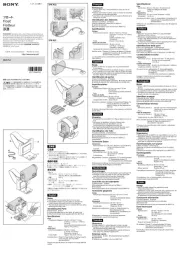
16 September 2025
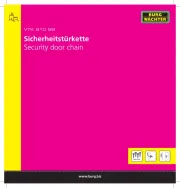
16 September 2025

16 September 2025

16 September 2025

16 September 2025
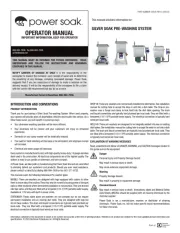
16 September 2025

16 September 2025